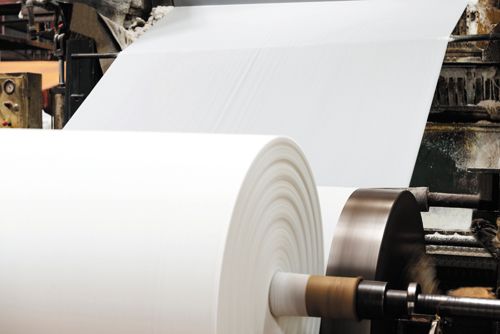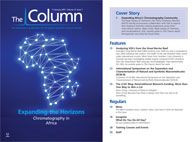Identifying EDCs in Paper Mill Wastewaters
Researchers investigating paper mill effluents and their impact on surface waters in Slovenia have identified endocrine disrupting compounds (EDCs) and their mutagenic and genotoxic properties using gas chromatography–mass spectrometry (GC–MS).
Photo Credit: hxdyl/Shutterstock.com

Researchers investigating paper mill effluents and their impact on surface waters in Slovenia have identified endocrine disrupting compounds (EDCs) and their mutagenic and genotoxic properties using gas chromatography–mass spectrometry (GC–MS) (1).
The pulp and paper industry is the sixth largest industrial polluter in the world releasing a wide range of solid, liquid, and gaseous waste into the environment (2). Most waste is discharged as wastewater, with one ton of paper production creating more than 12 m3 of wastewater. This wastewater represents a significant risk to surface waters often relied upon for drinking water, agricultural activities, industrial use, and in sports and leisure. However, little is known about the types and concentrations of individual toxic compounds released via the paper mill effluents, therefore researchers aimed to quantify the levels of EDCs in effluent from the two major types of paper mill - those which use virgin fibres and those which use recycled fibres. EDCs are significant and known pollutants of paper mill wastewaters, negatively affecting wildlife, and in humans EDCs are suspected to cause cryptorchidism, hypospadias, abnormalities in sperm, and increased hormone-related cancers (3,4). Furthermore, researchers also investigated the mutagenic and cytotoxic activities of the same water samples.
Using GC–MS and bacterial assays researchers confirmed the presence of seven EDCs in both the raw and biologically treated effluents from both paper mills. Significantly higher concentrations in waste from the paper mill that used recycled fibres were found. However, concentrations of EDCs were reduced by 30% following aerobic biological treatment in both mills, and a further 20% reduction was found after anaerobic biological treatment in the recycled fibre paper mill.
Significantly, the study also demonstrated that more than half of raw wastewater samples from the recycled fibre mill were mutagenic and two-thirds were genotoxic. This was not the case in samples taken from virgin fibre mills, and the study therefore concluded that paper mills using virgin fibres do not release mutagenic compounds into the environment during the paper production process, whereas recycled fibre mills do. The researchers were keen to stress that more research was needed to confirm this definitively, but given the results, and the associated risks of mutagenic and genotoxic activity to humans and wildlife, appropriate treatment methods need to be implemented into existing industrial water and wastewater treatment facilities with membrane filtration or advance oxidation processes (AOPs) suggested as potential solutions. - L.B.
References
- D. BalabaniÄa et al., Sci. Total Environ.574, 78–89 (2017).
- M. Ali and T.R. Sreekrishnan, Adv. Environ. Res.5, 175–196 (2001).
- D. BalabaniÄa et al., Reprod. Fertil. Dev.23, 403–416 (2011).
- A.C. Gore et al., Endocr. Rev. 36, 593–602 (2015).

University of Oklahoma and UC Davis Researchers Probe Lipidomic Profiles with RP-LC–HRMS/MS
May 6th 2025A joint study between the University of Oklahoma Health Sciences Center (Oklahoma City, Oklahoma) and the UC Davis West Coast Metabolomics Center (Davis, California) identified differentially regulated lipids in type 2 diabetes (T2D) and obesity through the application of reversed-phase liquid chromatography-accurate mass tandem mass spectrometry (RP-LC-accurate MS/MS).
Altering Capillary Gas Chromatography Systems Using Silicon Pneumatic Microvalves
May 5th 2025Many multi-column gas chromatography systems use two-position multi-port switching valves, which can suffer from delays in valve switching. Shimadzu researchers aimed to create a new sampling and switching module for these systems.
Studying Cyclodextrins with UHPLC-MS/MS
May 5th 2025Saba Aslani from the University of Texas at Arlington spoke to LCGC International about a collaborative project with Northwestern University, the University of Hong Kong, and BioTools, Inc., investigating mirror-image cyclodextrins using ultra-high performance liquid chromatography–tandem mass spectrometry (UHPLC–MS/MS) and vibrational circular dichroism (VCD).

.png&w=3840&q=75)

.png&w=3840&q=75)



.png&w=3840&q=75)



.png&w=3840&q=75)








